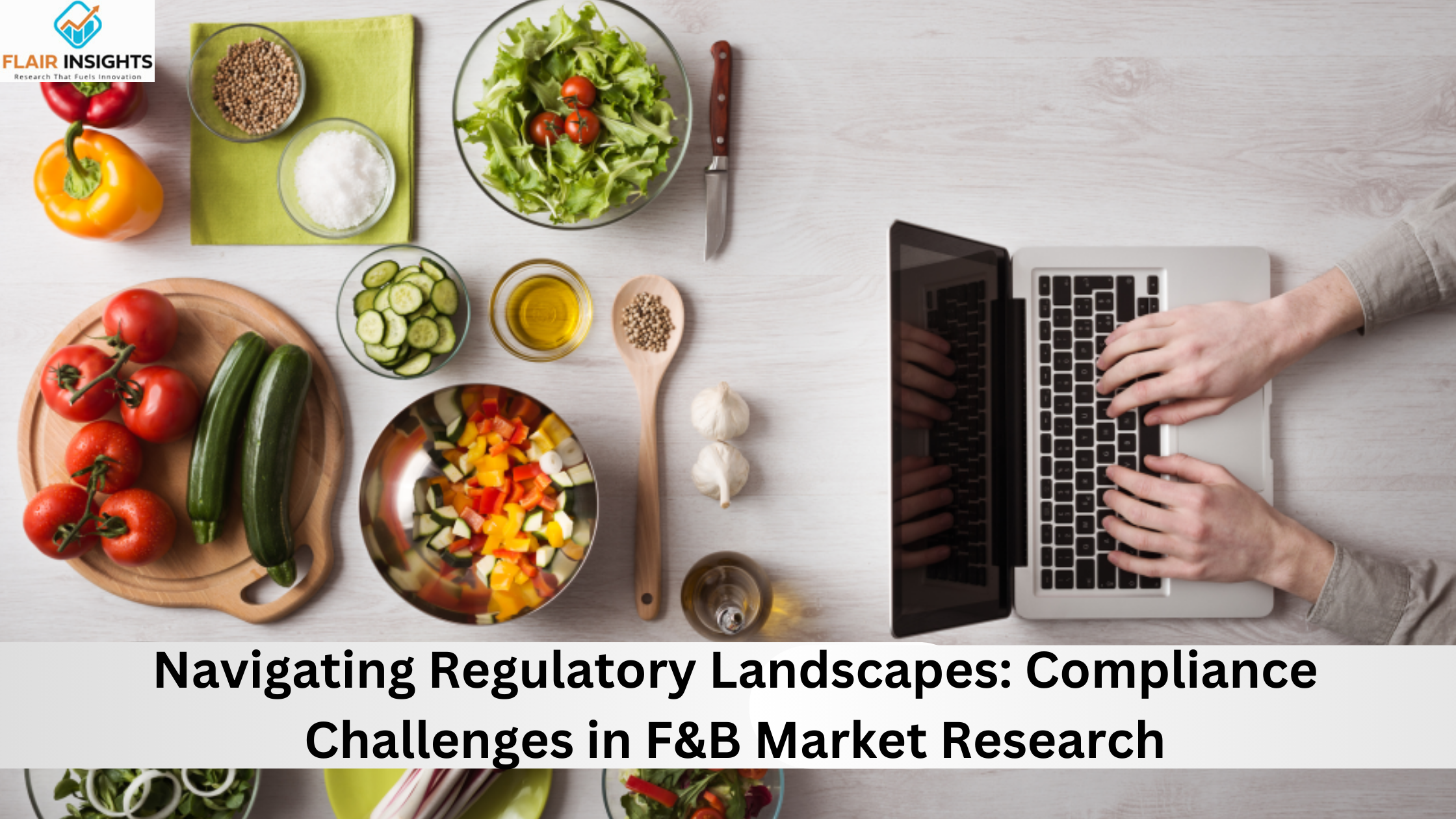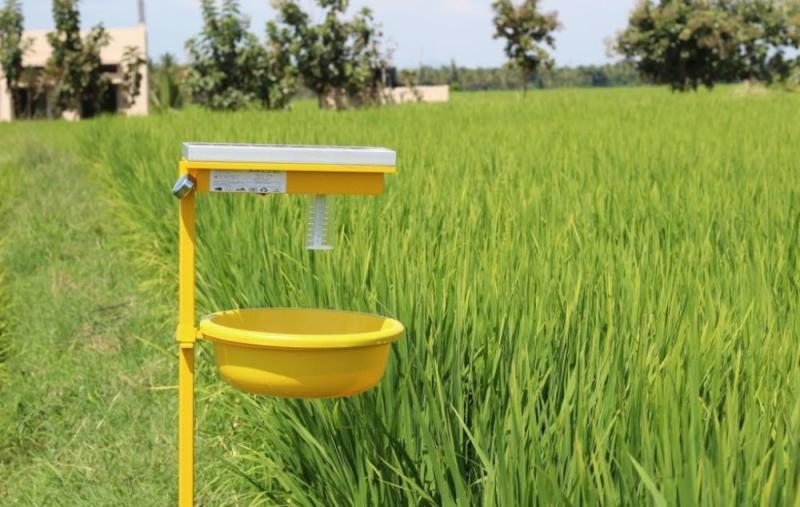
1. Introduction: Regulatory Complexities in the F&B Industry
Food and beverage is an industry wrapped in high wire regulations established to assure safety, quality, and transparency. This comprehensive article delves into a multi faceted world of compliance challenges that businesses have to deal with in the pursuit of F&B market research by examining the intricacies involved with regulatory landscapes and their developing complexities for companies to go through.
2. The Regulatory Framework: A Complex Tapestry
Any business that deals with food and beverages has to be based on an understanding of the regulatory landscape. The section examines the different components of the regulatory framework and the challenges associated with compliance.
2.1 Local, National, and International Standards
From local health regulations to nationwide food safety standards and global trade agreements, the number of regulations that an F&B business must adhere to is many. This sub section unpacks the layers of compliance required on different scales, thus bringing out the complexity that exists for companies operating on a global scale.
2.2 Evolving Regulatory Trends
As societal concerns and scientific knowledge evolve, so do regulations. We look at how shifting consumer preferences, technological changes, and environmental considerations all feed into a changing compliance environment.
3. Food Safety Regulations: A Paramount Concern
Food safety is one of the cornerstones of F&B regulations, touching almost every facet of the industry. Herein, we break down the challenges associated with assurance and maintenance in food safety compliance within a changing environment.
3.1 Hazard Analysis and Critical Control Points (HACCP) Challenges
Implementing and maintaining HACCP standards poses challenges for businesses. We discuss the intricacies of identifying critical control points, ensuring adherence, and navigating the complexities of HACCP certification.
3.2 Allergen Management and Labeling Compliance
As allergen-related concerns rise, businesses face challenges in managing and labeling allergens. This sub section examines the nuances of allergen compliance, including accurate labeling and the implications of allergen cross-contamination.
4. Labeling and Packaging Regulations: Communicating Transparency
It is through clear and proper labeling that one can gain the trust of the consumer. In this section, companies share how they approach compliance with labeling and packaging requirements relating to nutritional disclosure on food, ingredient transparency, and other eco-friendly packaging concerns.
4.1 Nutritional Labeling Challenges
Nutritional labeling is crucial for consumers making informed choices. We discuss the complexities of providing accurate nutritional information, addressing challenges related to serving sizes, added sugars, and evolving nutritional guidelines.
4.2 Eco-Friendly Packaging Compliance
With a growing emphasis on sustainability, businesses must navigate challenges in adopting eco-friendly packaging solutions. This sub section explores the intricacies of sourcing sustainable materials, meeting regulatory standards, and balancing environmental considerations with practicality.
5. Marketing and Advertising Compliance: Navigating Ethical Boundaries
In the competitive F&B landscape, marketing and advertising play a pivotal role. This section delves into the challenges businesses face in ensuring their promotional activities align with ethical standards and regulatory guidelines.
5.1 Health Claims and Advertising Standards
Navigating health claims and advertising standards requires a delicate balance. We explore the challenges of making accurate health claims while adhering to regulations, avoiding misleading consumers and regulatory scrutiny.
5.2 Social Media and Influencer Marketing Challenges
In this age of digital marketing, social media, and influencer collaborations come with new, unique challenges. This sub section addresses the challenges and the ways one can maintain compliance in such rapidly changing online platforms, with full disclosure and transparency in influencer partnerships.
6. Global Supply Chain Challenges: Traceability and Transparency
The F&B supply chain is global and complex, requiring traceability and transparency as imperatives of many regulatory requirements. This paper confines its deliberations on problems regarding assurance of traceability of ingredients and verification of compliance of suppliers besides preserving transparency throughout the supply chain.
6.1 Supply Chain Visibility Challenges
Indeed, the nature of today's global supply chains often results in challenges to maintaining visibility. We discuss the difficulties companies face in tracking and ensuring compliance at each stage of supply chains from the sourcing of raw materials all the way to the delivery of finished products.
6.2 Vendor Management and Compliance
This sub section deals with the intricacies of multiple vendor management. It outlines vendor management, thereby elaborating on the details of their vetting process, compliance monitoring on a continuous cycle of review, and lastly non compliance management.
7. Evolving Technologies: Opportunities and Challenges
As technologies like blockchain, IoT, and AI become integral to the F&B industry, businesses must navigate the opportunities and challenges these innovations present in terms of compliance.
7.1 Blockchain for Transparency and Traceability
Blockchain technology holds promise in enhancing transparency and traceability. We explore how businesses can leverage blockchain to address compliance challenges in supply chain management, food safety, and beyond.
7.2 IoT and Data Security Challenges
The integration of IoT devices introduces data security challenges. This sub-section delves into the complexities of safeguarding sensitive data generated by IoT devices, ensuring compliance with privacy regulations, and addressing potential vulnerabilities.
8. Compliance Training and Culture: Building a Robust Framework
Ensuring compliance goes beyond regulations; it requires a company-wide commitment to a culture of adherence. In this section, we explore the challenges in implementing effective compliance training programs and fostering a compliance centric organizational culture.
8.1 Employee Training Challenges
Training employees on compliance protocols is essential. We discuss the challenges associated with developing comprehensive training programs, ensuring consistent implementation, and keeping teams abreast of evolving regulations.
8.2 Cultivating a Compliance-Centric Culture
Building a culture in which compliance will be part of everyday running operations is one of the significant challenges. This subsection assesses the measures that businesses can undertake in building a culture of compliance: leading by example in commitment, strategies for effective communication, and accountability mechanisms.
9. Case Studies: Learning from Compliance Successes and Failures
Real world examples provide valuable insights into the practical challenges businesses face in achieving and maintaining compliance. This section analyzes selected case studies, highlighting both successes and failures and extracting lessons that can inform future compliance strategies.
10. Future Trends and Strategies: Staying Ahead in Compliance
As the F&B industry continues to evolve, anticipating future trends and proactively addressing compliance challenges become paramount. In this final section, we explore emerging trends and strategies that businesses can adopt to stay ahead in the ever-changing regulatory landscape.
10.1 Integration of AI in Compliance Management
The role of AI in streamlining compliance management is growing. We discuss how businesses can leverage AI technologies to automate compliance processes, identify risks, and enhance overall efficiency.
10.2 Collaboration and Industry Standards
Industry-wide collaboration and conformation to common standards may even make compliance easier. This subsection discusses how industry collaboration and standardized practices in facilitating compliance might be useful for any player involved in the F&B business.
11. Conclusion: Navigating the Regulatory Maze
In totality, the challenges to compliance in the F&B industry are multi dimensional and dynamic. From food safety regulations to marketing ethics, global supply chain to emerging technologies, the complexities faced by businesses in this regulatory scripted maze are extremely challenging. The knowledge of the same is not enough; it has to go beyond that in order to succeed. By creating a culture of compliance, utilizing state-of-the-art technologies, and learning from our successes and occasional failures, businesses can effectively move through the regulatory landscape and help to assure the overall integrity and safety of the food and beverage marketplace.
Trending Posts

Global Silver Nanoparticles Market
The global silver nanoparticles market was valued at $2.08 billion in 2020, and is projected to reach $4.1 billion by 2027, growing at a CAGR of ~17%

The Basic Pension Comes - Federal Cabinet Decides On the Pension Supplement
Financial security in old age is an issue that is causing stomach pains for more and more people in Germany. Low-wage earners fear the elderly. The ba

The Future of Artificial Intelligence
In recent years, the field of artificial intelligence (AI) has witnessed unprecedented growth and transformative advancements. As AI technologies

"LNG Bunkering" Here is something you must know!
In the current scenario of growing pollution, companies are trying to adapt more and more sustainable approach that not only gives eco-friendly result

Sailing into the future with Autonomous Ships
Autonomous Vehicles (AVs) are the uproar of this era. After airways, thanks to the companies like Tesla, that people are now getting used to see drive

Rising Demand For Uninterrupted Power Supply Is Expected To Drive The Power Rental Market
Todays world is totally reliant on electric power. There are many things which are not manageable without electricity. Power rental is a concept where

Rapidly growing IT industry coupled with the trend of bringing your own device (BYOD) is expected to provide new opportunities for growth of Cloud Collaboration
Cloud collaboration is the process of sharing and co-authoring the computer-based work through cloud technology

Fact check on UV Disinfection for COVID-19
Many regulatory authorities and bodies believe that UV disinfection technologies can play a role in a multiple barrier approach to reducing the transm

Vaccination: Vaccination Against Measles is Now Mandatory in Germany
The subject of compulsory vaccination has always heated peoples minds and caused emotionally charged discussions. The latest law in this area - the ob

The Global Ventilator Market Grows at a CAGR of 7.75 %
The Global Ventilator Market, which was at $688 million in the year 2016, is about to double by the year 2025, and reach a value of $1,347 million. Th
Recent Posts

Tariffs & Trade: Key Trends, Policies, and Market Impact
A tariff is a tax imposed by a government on imported or exported goods. It is primarily used to regulate international trade by either encouraging domestic production or generating revenue for the government.

The Global Buy Now Pay Later (BNPL) Market: Growth and Opportunities
The global Buy Now Pay Later (BNPL) market has emerged as a revolutionary financial solution, transforming how consumers approach shopping and payments. Offering flexibility and convenience, BNPL allows consumers to make purchases and pay.

Global Motorhome Market: Growth and Forecast
The motorhome market has gained significant momentum over the past decade, driven by rising interest in outdoor tourism, evolving consumer lifestyles, and advancements in vehicle design and technology. As a preferred option for travelers seeking.

The Global Poppy Seed Market: Growth and Trends
Poppy seeds, derived from the opium poppy plant (Papaver somniferum), have been a vital component in global culinary, pharmaceutical, and personal care industries for centuries. The global poppy seed market is gaining traction due to its versatility.

Global Plant Breeding and CRISPR Plants Market
The global food industry is facing immense pressure due to rising population levels, diminishing arable land, and the impact of climate change. Innovations in plant breeding, particularly the use of CRISPR technology, are reshaping the agricultural .

Global Pheromones Market – Trends, Opportunities, and Forecast
The global pheromones market has witnessed significant growth, primarily driven by the rising demand for eco-friendly pest control solutions in agriculture. Pheromones, natural chemicals emitted by insects and other organisms to communicate.

The Role of Technology in Oil and Gas Risk Management
In an industry as dynamic and complex as oil and gas, risk management is crucial for ensuring operational efficiency, regulatory compliance, and safety. Risk management software has become an indispensable tool for companies in this sector.

Global Smart Grid Sensors Market
The global energy landscape is undergoing a significant transformation, with smart grid technologies at the forefront. Smart grid sensors, a critical component of modern energy grids, enable efficient monitoring, energy distribution.

Global Photovoltaic Glass Market Research Report
The global photovoltaic (PV) glass market is experiencing unprecedented growth, driven by the accelerating shift towards renewable energy and the integration of sustainable materials in construction. This report delves into the market’s key growth.

Exploring the Growth of the Global Micro Solar Inverter Market
The Global Micro Solar Inverter Market is forecasted to expand significantly, growing from an estimated value of USD 4.8 billion in 2024 to USD 14.6 billion by 2030, with a CAGR of 24.2%. This growth reflects increased adoption of solar energy system
.png)